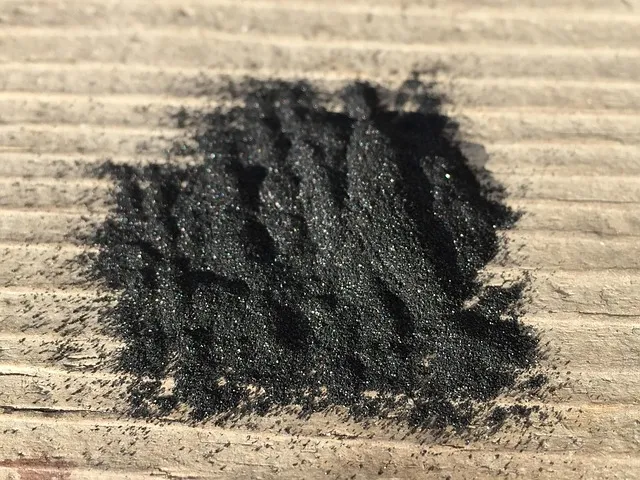Unlocking Nature’s Energy: The Fascinating World of Electroculture Gardening
Key Points
- Electroculture gardening involves the use of electricity, typically through the application of rudimentary copper rods or coils, to promote plant growth. This technique could decrease the use of chemical fertilizers and pesticides.
- Incorporating electroculture into your garden. Harnessing electroculture means working with natural forces such as atmospheric electricity and the Earth’s magnetic fields. This new technique has the potential to create more nutrient-rich soil and vibrant vegetation!
- While early research and modern enthusiasm both highlight promising benefits, since the scientific evidence is still lacking, it’s best to try it yourself on a smaller scale and keep records of your findings.
- Constructing simple electroculture devices at home is not cost-prohibitive, given the readily available materials. Experiment putting rods or antennas or whatever in various locations and record the difference in plant vitality and production.
- Local knowledge-sharing is priceless—get to know other gardeners and learn from their experiences, successes, and failures, as well as receive help with any problems you might encounter.
- As with all information, verify independently for accuracy and applicability to your local context. Keep an open mind and realistic expectations as you try out this new—but—still—developing gardening technique!
- 【Electroculture Gardening Kit】You will get 16 gauge 99.9% Pure Copper Wire (65.6 Ft), 2 size Fibonacci Coil Winding Jigs, 6pcs 5.9” Wooden Stakes and 6pcs 11.8” Wooden Stakes, sufficient quantity for making electroculture antennas.
- 【99.9% Pure Copper】 Crafted with premium pure copper, durable and long-lasting. It features a 16-gauge thickness, ensures efficient signal transmission and its super plasticity allows you to easily bend it into various shapes.
- 【Fibonacci Coil Winding Jigs】The gardening antenna making tool include two sizes fibonacci coil winding jigs. You can make garden wire for plants in different size and length. It’s easy to install and compatible with a range of gardening setups.
- 【Increased Plant Growth and Yield】The electroculture gardening kit can stimulate plant growth. This can lead to accelerated growth rates, increased root development, increase crop yields while reducing the need for fertilizers.
- 【Versatile Usage】 Perfect for indoor pots, flower beds, outdoor planters, and gardens of all sizes. The antenna is wound clockwise from bottom to top, specially designed for the northern hemisphere, such as the United States, Canada, Europe, etc.
Last update on 2025-09-30 / Affiliate links / Images from Amazon Product Advertising API
Electroculture is an ancient technique that involves applying weak electric currents or magnetic fields to stimulate plant growth and enhance resistance. American farmers and gardeners have readily adopted this technique to boost crop yield organically.
They can frequently achieve this by driving copper or zinc wires into the soil, which significantly increases their crop yields without the need for additional agrochemicals.
Some people have reported stronger root growth, larger leaves, and increased yields with crops like tomatoes or lettuce.
Scientists believe that the positive charge can help seeds absorb nutrients or water more efficiently.
This approach suits both small, backyard gardens and large-scale agriculture operations that are looking to reduce fertilizer use.
In this blog post, learn in-depth, practical tips, real-world examples, and straight-shooting results from growers all over the U.S. Learn more about how it can work for you.
What is Electroculture Gardening?
Electroculture gardening is a novel and natural method of promoting plant growth by harnessing the power of electricity.
This approach is over 120 years old. It made its debut in scientific publications of the late 19th century.
Nowadays, people are more familiar with electroculture gardening and more aware of its advantages. A new wave of interest exploded in the early 1900s. Farmers noticed that crops grew like crazy after a thunderstorm.
Gardeners today are adopting electroculture as a more eco-friendly way to increase their yields. Gardeners, farmers, and scientists are all looking for more sustainable alternatives to chemical fertilizers and pesticides.
Proponents assert that electroculture increases oat and barley yields by as much as 22%. It can increase pea seed germination and development rates by up to 25% and 18%.
Beyond Soil, Sun, and Water
It takes more than soil, sun, and water to grow healthy plants. Energy from the atmosphere—what laypeople refer to as “atmospheric energy”—is involved in keeping plants healthy as well.
Electroculture harnesses this energy using tools like copper rods or handmade antennas.
These instruments attract ambient electricity present in the atmosphere and channel it underground.
The basic concept is to give plants a different kind of energy.
We don’t want to fight against nature; we want to connect and collaborate with nature, rather than just using store-bought plant food.
The Core Idea: Energy for Plants
The core concept behind electroculture is providing plants with a small electric charge.
This zap seems to stimulate plants to absorb more nutrients and water, allowing them to develop deeper roots and grow more robustly.
Some devices are as simple as wires and sticks, while more advanced devices are made with insulated wires.
Think “Qigong” for Your Garden
You can imagine electroculture as “Qigong” for your garden. In both, the goal is to circulate and balance energy for optimal health.
Taking this approach into your garden creates a sensitivity toward your plants as part of a vast, living ecosystem.
Common Tools: Rods and Coils
Copper rods, wire coils, or antennas are the most common tools used in electroculture.
Select high-quality copper wire for optimal results.
DIY devices are perfectly adequate—coil some wire around a wooden dowel or experiment with a spiral design.

Unpacking Electroculture: How It Claims to Work
Electroculture is an alternative farming practice that proponents say enhances plant growth by harnessing energy from the atmosphere.
This concept is not new, having existed for over a century, with some of the first experiments by European inventors.
The technique employs relatively simple tools, such as copper wire spirals or loops, to attract atmospheric electricity.
Proponents of electroculture believe that it promotes quicker crop growth. They further claim that it enhances flavor and reduces the need for fertilizer. Others dismiss it as a “horticulture myth.”
Some present actual test results with proven higher yields in crops such as cabbage, oats, and barley.
1. Tapping Atmospheric Electricity
Plants are thought to receive nourishment from the electric charge present in the air. To accomplish this, gardeners install copper antennas—usually in spiral or loop shapes—around their plants.
These antennas absorb minuscule packets of energy from the atmosphere, particularly during stormy weather or windy conditions.
The specific energy plants can absorb varies with weather and environment. In one of these studies, researchers noticed that installing these devices increased the germination rate of pea seeds by 25%.
They noted an almost 18% increase in pea growth.
2. Earth’s Magnetic Fields at Play
Earth’s magnetic fields are at play. Earth’s natural electromagnetic fields contribute to plant growth as well.
Proponents claim these fields assist in directing the growth of plants. When gardening tools or beds are oriented with these physical forces, plants can grow more vigorously or healthily.
While this concept warrants further evidence, countless green thumbs across North America and Europe continue to investigate these impacts.
3. Enhancing Soil Particle Charge
Electroculture could additionally affect soil particle charge.
This, in turn, improves the soil’s ability to hold onto nutrients and water.
Electroculture proponents claim that when soil is charged correctly, roots can more readily absorb nutrients.
This increases growth and yields.
4. The Role of Subtle Energies
Some proponents believe that there are subtle energies surrounding us that are beneficial for plants.
These energies can increase the rate at which plants metabolize food and alter their growth process. They work wonders in helping plants overcome stress!
Though somewhat fringe in the world of mainstream science, this concept has gained traction among alternative thinkers willing to try just about any gardening hack.
5. Mycorrhizal Fungi Interactions
Symbiotic fungi in healthy soil, known as mycorrhizae, multiply root surface area and assist plants in absorbing water and nutrients.
Electroculture may further optimize these relationships, allowing plants to extract even more nutrients from the soil.
Protecting these fungi is crucial for maintaining healthy plants and producing abundant crops.
- Van Doorne, Yannick (Author)
- English (Publication Language)
- 236 Pages – 10/19/2023 (Publication Date) – Isidorus Publishing – Yannick Van Doorne (Publisher)
Last update on 2025-09-30 / Affiliate links / Images from Amazon Product Advertising API
Why Gardeners Explore Electroculture

Gardeners will always continue to explore new ways to grow hardier, healthier crops, and electroculture is a promising new avenue.
This approach involves passing low-voltage electricity through the soil to stimulate plant growth.
It attracts people with promises of higher yields, reduced pesticide use, and more environmentally friendly gardening methods.
Let’s unpack why so many gardeners are exploring this ancient-yet-modern concept.
Hopes for Healthier, Bigger Plants
Like many gardeners, we’re looking forward to healthier, higher-yielding plants thriving in our garden beds.
Electroculture piques their interest with captivating anecdotal accounts and compelling statistics.
For instance, uncomplicated arrangements used wind- or rain-created energy.
In one case, they increased the germination of pea seeds by more than 25%, and their pea plants grew nearly 18% taller on average.
In Germany, strawberries, beans, and barley all experienced larger growth and earlier ripening when connected to electric systems.
Some of these cabbage growers even experienced a 75% increase in their crop yields, accompanied by improved flavor.
That isn’t easy to brush aside. Reports like these and tests like these provide confidence to gardeners that they should give electroculture a shot in their yards.
Improving Your Garden’s Soil Naturally
Electroculture could improve your garden’s soil without the toxic chemicals. In the long run, decreasing our reliance on chemicals allows the soil to return to a healthy, rich habitat for worms and beneficial bugs.
Gardeners would notice that they could reduce the use of fertilizers, and the soil remained fertile.
This natural boost doesn’t just benefit your soil for one season; it can nourish it for years to come.
Could It Mean Fewer Garden Chemicals?
Many gardeners are eager to avoid the synthetic chemicals. Electroculture provides them a path to using less or no fertilizer and garden chemicals.
This transition is better for the planet, as it reduces runoff and protects streams and wildlife.
It’s a win-win. It’s in alignment with what fans of organic gardening want.
A Gardener’s Quest for Greener Thumbs
Gardeners are always eager to try out new tricks and report back on what works.
As innovative practices often do, electroculture ignites discussion in social media forums and at local gardener club gatherings.
People share their experiences and learn from one another. Now, trying electroculture is just part of the fun that makes them want to grow and learn together.
- Stakes for Plants: each package includes 18 pieces of spiral garden stakes, with a height of about 12 inches and a diameter of around 0.25 inches; This pack ensures that you have adequate gardening stakes for plants at your disposal for various plant support needs
- Copper and Wood Material: crafted from wood, our spiral plant stakes are designed to provide robust support for your plants; The inclusion of copper wire adds to the stake’s functionality and makes it ideal for both indoor and outdoor use; It ensures durability and longevity, with nice conductivity
- Advanced Features: our plant spiral stake is more than just support tools; With atmospheric antennas, the garden plants stake harness the earth’s natural energy; This unique feature not only increases the yields of your crops but also reduces the need for fertilizers
- Simple and Effective: you need to drill a 2-3 inch hole in the soil next to your plant, insert the garden vegetable stake, and then wrap the copper wire around it; The result is a sturdy support structure for your plant, ensuring well growth
- Clockwise Winding Design: the antenna of our wood copper garden stakes winds clockwise from bottom to top; This design is specifically for countries in the Northern Hemisphere, including Canada, the United States, and Europe
Last update on 2025-09-30 / Affiliate links / Images from Amazon Product Advertising API
Electroculture’s Past: Old Ideas, New Interest
Electroculture isn’t new. Its roots can be traced back to the 1740s. Early scientists in Europe started experimenting with the idea of using electric currents to accelerate crop growth. People today consider it a new and revolutionary concept.
Yet, this practice has a long, complex history replete with shining promises and considerable doubt.
Today, growers are re-examining these once-popular notions in search of new practical solutions to gardening woes.
Early Experiments and Forgotten Wisdom
As far back as 1844, Scottish landowner Robert Forster employed what he referred to as “atmospheric electricity” to increase his barley production.
So successful were these initial experiments that others across Britain and France quickly ran their tests.
They were seeking a way to apply electricity to produce larger, healthier plants.
Some of these initial results were favorable—crops would outpace their counterparts or appear more vibrant under particular configurations.
Results were often inconclusive, and the scientific community essentially questioned the efficacy.
By the close of the 19th century, electroculture found itself associated with medical quackery.
Yet despite all this, some persevered. Georges Lakhovsky designed equipment to gather and direct electricity to plants.
Selim Lemstrom went so far as to publish a text, “Electricity in Agriculture and Horticulture,” in 1904, to try to carry that electricity forward.
Why It’s Making a Comeback Now
Electroculture is being revived as people seek alternative methods of gardening that don’t require the heavy use of chemical fertilizers.
The demand for more sustainable practices and technological innovations, such as solar-powered lawn equipment, is making a difference.
Online communities are spreading tips, and do-it-yourselfers are constructing their own devices with just some wires and copper.
From Niche Interest to Garden Trend
What was once a niche interest has become a garden trend. Far fewer hands-on guides are available, but more people have access to them now that starter kits can be purchased online.
With all the new interest, there will be more opportunities to learn from one another and share results.
Does Electroculture Work? A Balanced Look
Electroculture History
Electroculture has a fascinating history dating back to the 18th century.
Some people argue that its longevity is evidence of its worth.
However, the practical effects of the method have been hotly contested by growers and authorities alike.
We know there is a lot of hype: more than 27 million TikTok videos!
Now, it’s time to separate what we know from what remains unproven.
What Current Science Suggests (Or Lacks)
What the current science indicates (or doesn’t) is crucial to understanding electroculture.
A new paper in Nature Food evaluated the use of a triboelectric nanogenerator on pea crops. Specifically, the researchers aimed to establish a strong electric field to accelerate growth.
Although the findings were exciting, their lack of repeatability in various home gardens and climates were indeed concerning.
As researchers have noted, there are no large-scale, long-term studies to support these claims.
It’s a massive hole in what we know. We need to determine which crops respond best, which voltages are safe, and how soil type will be a factor in this process.
As with any groundbreaking plant science, additional studies are warranted before anyone can definitively claim what works and what doesn’t.
Stories and Snaps from Fellow Gardeners
Gardeners have submitted an incredible variety of personal stories about their experiences.
Some believe their tomatoes or beans grew faster, while others have seen no difference at all.
Since people experiment with different wire types and placements, it’s hard to compare results.
These stories create an incredible feeling of shared community, but it isn’t easy to extract specific lessons learned without additional shared data.
Separating Hype from Helpful Practice
With all the noise out there on the internet, separating hype from helpful practice is not easy. Only available on the newengine.org, experts caution against believing the hype that seems too good to be true.
The most reliable approach is to experiment, monitor what’s effective in your home garden, and challenge grandiose claims.
My Take: Curious but Cautious
Electroculture looks promising and is an experimental gardening technique worth keeping an eye on, but I remain skeptical.
As an informed gardener, I love experimenting with new ideas, but I want to see scientific studies before I buy into the buzz.
- 5 Electroculture plant stake antennas 12″ long natural wood wrapped in 99.9% pure solid copper wire with Sun Spiral Top.
- Each stake uses over 4 feet of thick 14 gauge copper in each wrap. Our electroculutre products maximize the benefits to your plants by using more copper per stake and also useing a much thicker 14 gauge copper wire compared to the thin 18 gauge or smaller wire.
- Proudly hand made in the USA. Made with care using the highest quality materials.
- See all of our electrocultre products by clicking our Amazon store link. Just click the Electroculture Grows link under the Add To Cart & Buy Now buttons to the right.
- Improves the Health of the Whole Soil Biome.
Last update on 2025-09-30 / Affiliate links / Images from Amazon Product Advertising API
Simple Electroculture: Trying It Yourself
Electroculture works by harnessing the Earth’s natural energy to support plant growth.
For gardeners interested in experimenting with it, there’s encouraging news—simple electroculture techniques are relatively accessible.
Using common materials, you should be able to establish simple projects to teach yourself through trial and error.
It’s a practical approach to understanding how atmospheric electricity can benefit your plants.
Making Basic Electroculture Rods
Begin with a wooden rod—bamboo or an old broom handle is ideal.
For wire, copper is the preferred material, but brass, zinc, or bronze are also acceptable alternatives. Use needle-nose pliers to wrap the copper wire around the stick tightly.
If you are in the Northern hemisphere, wrap your wire clockwise. You want to achieve nice, close, even coils.
Experiment with other metals or thicknesses and find what works best in your garden.
Others acquire voltmeters to test for energy, although this isn’t necessary to start.
Crafting Simple Spiral Antennas
Crafting Simple Spiral Antennas Spiral antennas are simple—just spiral your wire in a loose coil around a stick.
This design collects more energy from the ether. You can craft taller spirals to use in large beds or shorter spirals for container planting.
Adjust the appearance and height to fit your environment. As always, creativity is the name of the game, so don’t hesitate to experiment with different shapes.
Where to Place Your Devices
Choose a sunny spot. As we’ve learned, sunlight appears to contribute to energy flow.
Don’t stake your rods down directly in the center of a thick plant patch. Experiment with locations near tomatoes, beans, or flowering plants.
Keep an eye on plants to see how they are responding. Manipulate rods accordingly if you see more vigorous growth in other locations.
Observing Potential Changes in Plants
Have a field notebook. Take notes on plant height, leaf coloration, and fruit/vegetable yield before and after installation of your electroculture devices. Make sure you take pictures every week.
Share your discoveries with other home gardeners—these tales of mature trees or new garden beds will benefit all.
Potential Downsides and Considerations

While electroculture has intrigued many gardeners and urban growers worldwide, this practice presents its own set of challenges.
Although many anecdotal claims from users indicate improved germination rates and increased crop production, scientific research is still in the early stages.
So before diving in, consider the potential downsides. Evaluate the local effects and determine if this approach is the right fit for your location.
The Risk of Misinformation
Misinformation travels quickly, particularly on new technologies like electroculture.
Most claims are based on anecdotal evidence rather than controlled studies.
This absence of peer-reviewed studies in North America and Europe creates a substantial research gap.
You can come across all sorts of advice online, much of which is not rooted in research.
It can be as simple as verifying the source of information. Identify sources that provide strong evidence, not just promising anecdotes.
In this manner, you can avoid surprises and plan better depending on what you want to do.
Understanding Environmental Impacts
While electroculture may improve plant growth, it is not beneficial for all ecosystems. Some crops, such as cherry trees, will thrive, while others—potatoes, possibly—show no improvement.
Your local soil, native insects and pollinators, and weather conditions play a huge role. Using electroculture while ignoring these will throw the balance out of whack in your garden.
After all, sustainable gardening is about understanding what works best on your piece of earth.
Is It Right for Every Garden?
Urban backyards, rooftop gardens, or large commercial farms will all have different requirements.
That’s why it makes sense to consider your space and what you’re currently growing before getting started.
First off, this technique isn’t meant as a substitute for Age-Old Agro.
Managing Expectations Realistically
Results can be highly variable. Where some observers perceive swift, dramatic changes, others can’t find any at all.
It requires a commitment to take the long view and be patient while determining what is effective.
Continue to learn from every season and remain open to making changes.
Our Conclusion About Electroculture Gardening
Electroculture offers a new, electrified approach to traditional gardening.
Others claim that copper wire and rudimentary setups are sufficient. Some are still requesting additional evidence.
Backyard electroculturists are spreading the buzz in gardens from Oregon to Georgia. Gardeners report healthier roots, larger leaves, and easier water management.
Some people get stuck on expense or inconsistent performance.
No magic, just ordinary folks experimenting, fiddling around, and sharing ideas.
Interested in improving your gardening results by electrifying your plants?
So please do it.
Test on a small area, take good records, and share tales with your neighbor.
Have questions or crazy outcomes for us to feature?
Please leave a note below, or find us at the next garden party.
We still have much to learn and many efficient garden hacks to share.
- What will you get : Includes 10 electroculture antennas, each measuring 13.5 inches (34cm) in length, making it perfect for farms, gardens, greenhouses and indoor use.It is very suitable for gardens, potted plants, flower beds, flowers, and fruit trees
- Promote Plant Growth :Our electroculture plant stakes is a method of using conductive metals, harness the earth’s natural energy to the soil, significantly increasing plant growth, while reduce irrigation, not only increases the yields of your crops but also reduces the need for fertilizers
- High Premium Material :Our electroculture copper gardening Antenna uses 99.9% copper wires to be wound clockwise onto wooden sticks. are placed into the soil to create an ether antenna,ensures good conductivity and durability
- Easy to Install : Simply moisten the soil with water.insert the antenna stake, and cover with soil to secure it.Drill a 2-3 inch hole in the soil next to the plant and insert the antenna stake, and cover with soil to secure it
- Widely Usage : Copper wire can be used to create atmospheric antennas that harness the earth’s energy and increase the magnetism and sap of plants, leading to stronger plants, more moisture for the soil. Whether you’re a seasoned gardener or a passionate plant enthusiast, our antenna set is a valuable addition to your gardening tool kit
Last update on 2025-09-30 / Affiliate links / Images from Amazon Product Advertising API
Electroculture Gardening Frequently Asked Questions
What is electroculture gardening?
What is electroculture gardening? Enthusiastic gardeners are looking forward to seeing this experimental gardening technique promote vigorous growth and robust plants organically.
How does electroculture claim to help plants?
How does electroculture gardening claim to help plants? This technique helps establish stronger roots, enhance crop yields, and revitalize the soil.
Is electroculture safe for home gardens in the U.S.?
Yes. Electroculture gardening is a sustainable practice that features low-tech, DIY applications, utilizing inexpensive materials such as copper wire and wooden stakes. This innovative gardening technique eliminates the use of harmful chemicals and high-voltage electricity, ensuring safety for both the gardening community and home gardens.
Has science proven electroculture works?
Research on electroculture, although limited, has generated interest among electroculture enthusiasts, who report benefits in their gardening communities. However, scientific studies remain inconclusive, so it’s wise for informed gardeners to conduct small trials before widespread application.
Can I try electroculture with everyday materials?
Yes, you don’t need much to get started—just some copper wire, wood stakes, and basic tools. This simple electroculture setup can be quickly established in any backyard across the United States, making it accessible to enthusiastic gardeners.
Are there any risks in using electroculture?
Risks are minimal and easily managed in the gardening community. These benefits are not a foregone conclusion, as the results of electroculture gardening can vary based on soil type, climate conditions, and the specific plant species.
Why are more gardeners interested in electroculture now?
Why are more gardeners interested in electroculture gardening now? In this respect, plant electrification provides an accessible, low-cost, environmentally friendly solution for American gardeners.












